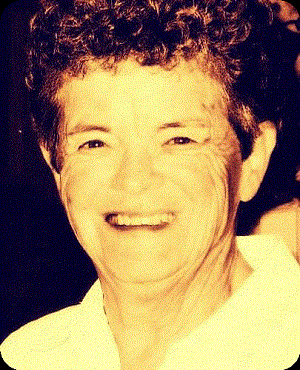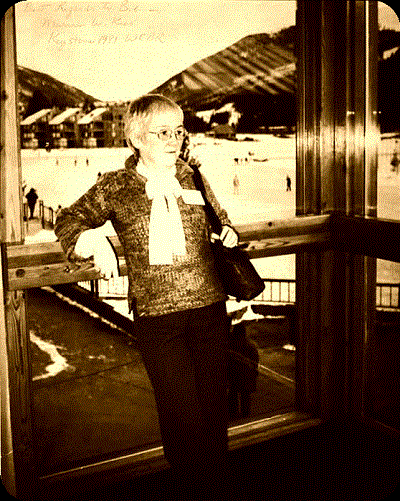Marian Wood Kies, PhD
1915-1988
|
|
Marian was born and raised in the Midwest (Centralia, Illinois) and received her B.S. with high honors from the University of Illinois, Champagne-Urbana in 1936. As an undergraduate, she worked in the laboratory of H. E. Carter a pioneer in sphingolipid chemistry (who, incidentally, also mentored Bob Yu). Her undergraduate research generated what was to be the first of 177 articles published in her career, which spanned over 50 years (Wood et al. JBC 117 1-5, 1937). Shortly after graduation she married her physics instructor and moved with him to Washington, D.C. where she worked for most of her life. She continued her studies with another renowned scientist, Vincent du Vigneaud at George Washington University which culminated in a MA in Biochemistry and two additional papers in JBC. When her advisor left Washington she joined the laboratory of A.K. Balls at the US Department of Agriculture. Her studies on the metabolism of homocystine and methionine earned her a Ph.D in Enzymology from George Washington University in 1944.
After several short moves with her family which consisted of her husband and three children born between 1941 and 1951, she settled into a career as a biochemist at NIH in 1953. She rose through the ranks to become the Chief of the Section on Myelin Chemistry in the Laboratory of Cerebral Metabolism in 1968 — a position she held for the rest of her life.
It was at the beginning of her career that she isolated and characterized myelin basic protein and its role in EAE. She single handedly began the field of myelin basic protein which was a dominating theme in neurochemistry for decades. Over the next 35 years Marion’s laboratory characterized the biochemistry and immunology of MBP and the mechanisms of cell-mediated immunity. In particular, her laboratory defined the immunological mechanisms that controlled the induction and suppression of EAE, defined several immunogenic sites of MBP and developed a model of EAE in the guinea pig, which develops lesions that are quite similar to those observed in multiple sclerosis.
As a scientist, Marion set high standards for herself and others. She was never hesitant to speak her mind, especially when confronted with shoddy research and lazy thinking. This gave her a reputation as “feisty” which was well deserved. But she was also a good friend and colleague. For instance, Bob Yu remembered that she always bought theater tickets in Washington for several of her collegues who were attending study section (Larry Eng, Bob Ledeen, among them), which provided welcome relief from the grinding work of the review panel sessions. Marian was an excellent communicator in written and in oral presentations and a very well respected leader in her field. She also was a founding member of the ASN and held many offices in the ASN throughout her career.
The Marian Kies award is presented by the ASN to a junior scientist for outstanding research conducted during graduate training. This award is named in her honor because of her high standards for excellence in research as well as her love and dedication to educating students. In particular she helped her students to think critically and work independently and she strongly supported their career development. At the ASN meetings, which she attended regularly, she was often seen more often interacting with students than with her peers. She served as a wonderful role model for all students. It is for these attributes that the ASN award for an outstanding Ph.D thesis is named in her honor.
(see also: Alvord,E.C. J. Neurochem 53:319-320,1989)


